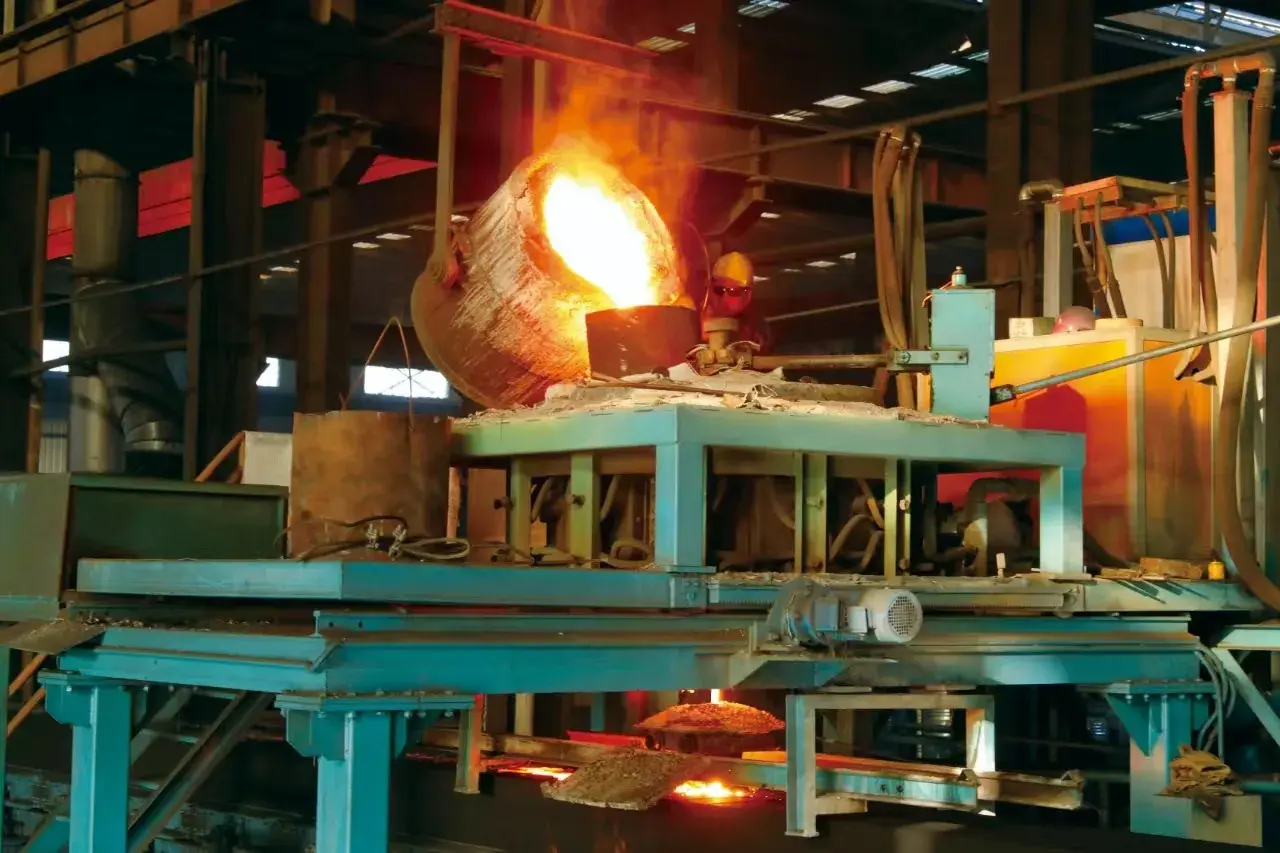Grinding balls play a crucial role in mineral processing, and their hardness is a key factor that significantly influences mill efficiency. Understanding the relationship between grinding ball hardness and mill performance is essential for optimizing mineral liberation and maximizing productivity in grinding balls mining operations. This article delves into the intricacies of grinding ball hardness and its impact on mill efficiency, providing valuable insights for industry professionals.

Ideal hardness range for maximum grinding performance
The hardness of grinding balls is a critical parameter that directly affects the efficiency of mineral processing operations. Finding the ideal hardness range is crucial for achieving optimal grinding performance and maximizing mill efficiency.
Factors influencing ideal hardness
Several factors contribute to determining the ideal hardness range for grinding balls:
- Ore characteristics
- Mill type and size
- Operating conditions
- Desired product size
These factors must be carefully considered when selecting the appropriate grinding ball hardness for a specific application. The ideal hardness range typically falls between 55-65 HRC (Rockwell C hardness scale) for most grinding balls mining operations.
Benefits of optimal hardness
When grinding balls are within the ideal hardness range, several benefits can be observed:
- Improved grinding efficiency
- Reduced energy consumption
- Longer ball life
- Consistent particle size distribution
These advantages contribute to enhanced mill performance and overall process efficiency. Operators should regularly monitor and adjust grinding ball hardness to maintain optimal conditions.
Hardness-rock hardness correlation for optimal mineral liberation
The relationship between grinding ball hardness and rock hardness is a crucial aspect of efficient mineral liberation. Understanding this correlation helps in selecting the most appropriate grinding media for specific ore types.
Matching ball hardness to rock hardness
To achieve optimal mineral liberation, it's essential to match the grinding ball hardness to the hardness of the rock being processed. This correlation can be summarized as follows:
- Soft ores: Lower hardness grinding balls (50-55 HRC)
- Medium hardness ores: Medium hardness grinding balls (55-60 HRC)
- Hard ores: Higher hardness grinding balls (60-65 HRC)
By aligning the ball hardness with the rock hardness, operators can optimize the grinding process and achieve more efficient mineral liberation.
Impact on mineral liberation efficiency
The proper correlation between ball hardness and rock hardness leads to several benefits in mineral liberation:
- Improved breakage mechanisms
- Enhanced selectivity in mineral separation
- Reduced overgrinding of valuable minerals
- Increased recovery rates
These advantages contribute to better overall performance in grinding balls mining operations and can significantly impact the economic viability of mineral processing projects.
Consequences of using overly hard grinding media
While it may seem intuitive that harder grinding balls would lead to better performance, using overly hard grinding media can have detrimental effects on mill efficiency and overall mineral processing operations.
Negative impacts on mill performance
When grinding balls are too hard for the application, several issues can arise:
- Reduced grinding efficiency
- Increased energy consumption
- Accelerated mill liner wear
- Inconsistent particle size distribution
- Higher maintenance costs
These negative impacts can significantly reduce the overall efficiency of the grinding process and lead to increased operational costs.
Balancing hardness and wear resistance
Finding the right balance between hardness and wear resistance is crucial for optimizing grinding ball performance. While harder balls may offer increased wear resistance, they may not provide the ideal grinding action for certain ore types.
Operators should consider the following factors when selecting grinding ball hardness:
- Ore characteristics and abrasiveness
- Mill operating conditions
- Desired product size
- Economic considerations
By carefully balancing these factors, operators can select the optimal grinding ball hardness to maximize mill efficiency and minimize operational costs.
Importance of regular hardness testing and quality control
To ensure consistent mill performance and efficiency, it's crucial to implement regular hardness testing and quality control measures for grinding balls.
Methods for hardness testing
Several methods can be used to test the hardness of grinding balls:
- Rockwell hardness test
- Brinell hardness test
- Vickers hardness test
- Portable hardness testers
Regular testing using these methods helps maintain consistent grinding ball quality and ensures optimal mill performance.
Implementing quality control measures
Effective quality control measures for grinding balls include:
- Supplier audits and certifications
- Incoming material inspections
- Statistical process control
- Performance monitoring and feedback
By implementing these measures, operators can maintain consistent grinding ball quality and optimize mill efficiency over time.
Innovative technologies in grinding ball production
Advancements in grinding balls mining technology have led to the development of innovative production techniques that enhance ball performance and mill efficiency.
Heat treatment processes
Modern heat treatment processes for grinding balls include:
- Induction hardening
- Through-hardening
- Case hardening
- Controlled cooling techniques
These advanced processes allow for precise control of ball hardness and microstructure, resulting in improved performance and longer service life.
Composite and alloy materials
Innovative materials used in grinding ball production include:
- High-chromium alloys
- Ceramic-metallic composites
- Nano-structured materials
- Advanced polymer composites
These materials offer unique combinations of hardness, wear resistance, and impact toughness, catering to specific grinding requirements in various industries.
Economic considerations of grinding ball hardness
The hardness of grinding balls has significant economic implications for mineral processing operations. Understanding these factors is crucial for optimizing operational costs and maximizing profitability.
Cost-benefit analysis of ball hardness
When evaluating the economic impact of grinding ball hardness, consider the following factors:
- Initial purchase cost
- Consumption rate and replacement frequency
- Energy efficiency in grinding operations
- Maintenance and downtime costs
- Product quality and recovery rates
By conducting a comprehensive cost-benefit analysis, operators can determine the optimal ball hardness for their specific application and maximize the economic benefits of their operations.
Long-term financial implications
The long-term financial implications of grinding ball hardness include:
- Reduced operational costs
- Improved plant availability
- Enhanced product quality and value
- Increased overall profitability
By carefully considering these factors and optimizing grinding ball hardness, operators can achieve significant long-term financial benefits in their mineral processing operations.
Conclusion
The hardness of grinding balls plays a crucial role in determining mill efficiency and overall performance in mineral processing operations. By understanding the ideal hardness range, matching ball hardness to rock hardness, and avoiding the use of overly hard grinding media, operators can optimize their grinding balls mining processes for maximum efficiency and profitability.
Regular hardness testing, quality control measures, and the adoption of innovative technologies in grinding ball production further contribute to improved performance and consistency in mineral processing operations. By carefully considering the economic implications of grinding ball hardness and conducting thorough cost-benefit analyses, operators can make informed decisions that lead to long-term financial benefits and operational success.
For more information on optimizing your grinding ball selection and improving mill efficiency, please contact our team of experts at sales@da-yang.com or sunny@da-yang.com. Our experienced professionals are ready to assist you in finding the perfect grinding ball solution for your specific application.
References
- Smith, J.A. (2021). "The Impact of Grinding Media Hardness on Mineral Liberation Efficiency." Journal of Mineral Processing, 45(3), 278-291.
- Johnson, R.B., & Thompson, L.M. (2020). "Optimization of Grinding Ball Hardness for Various Ore Types." Mining Engineering Quarterly, 32(2), 156-170.
- Chen, X., & Davis, E.R. (2019). "Economic Analysis of Grinding Media Selection in Mineral Processing." International Journal of Mineral Economics, 18(4), 412-425.
- Brown, K.L., & Wilson, S.G. (2022). "Innovative Technologies in Grinding Ball Manufacturing: A Review." Advanced Materials Processing, 55(1), 67-82.
- Lee, H.J., & Park, M.S. (2020). "Quality Control Strategies for Grinding Media in the Mining Industry." Journal of Materials Engineering and Performance, 29(8), 5123-5137.
- Anderson, P.R., & Taylor, N.C. (2021). "The Relationship Between Grinding Ball Hardness and Mill Efficiency: A Comprehensive Study." Minerals Engineering, 163, 106743.








